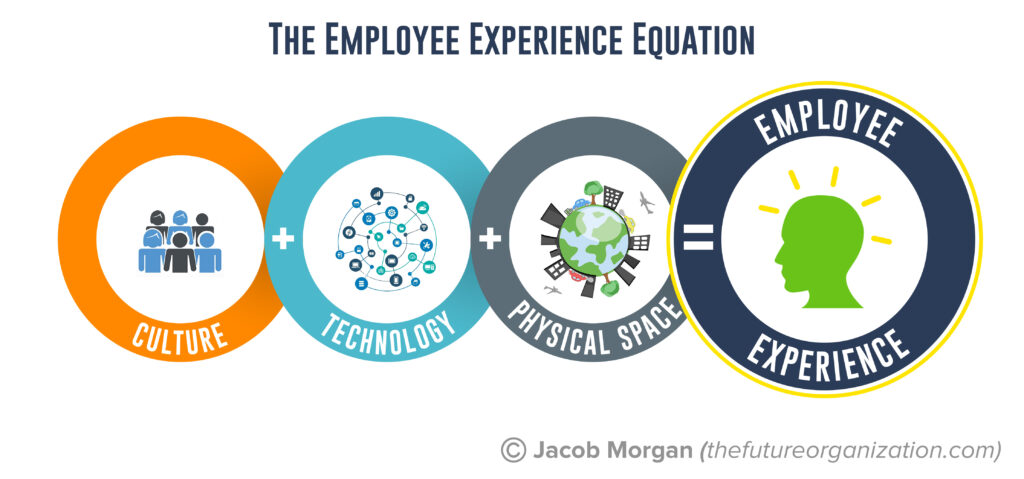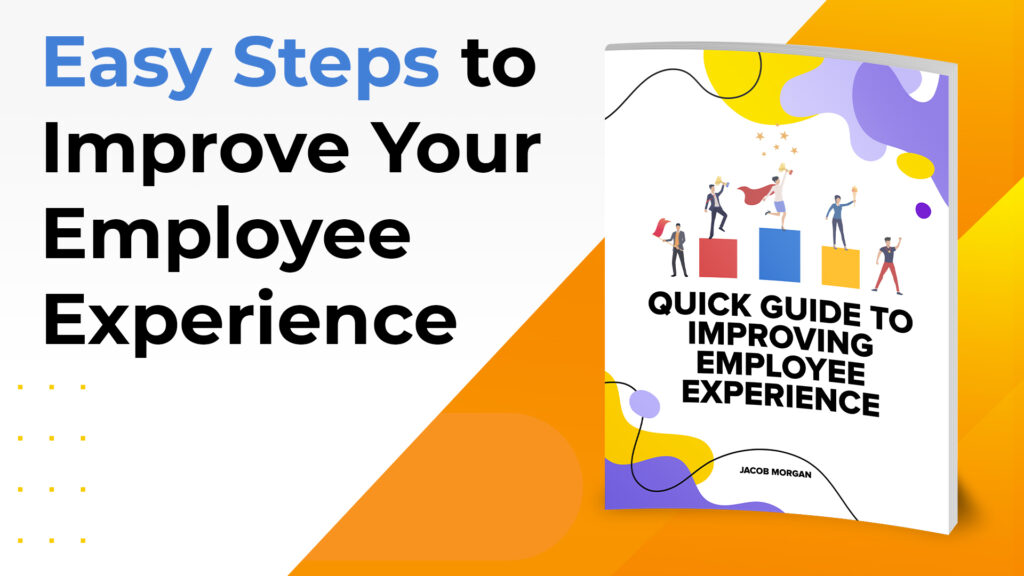We all deserve to work for an organization where we actually WANT, not NEED to show up to work each day.
But for some reason, regardless of how much money we spent on employee engagement programs, the needle never moves, how come?
Because we are focusing on the outcome and not on the cause. Employee engagement has become synonymous with perks and benefits…shiny new things that you can offer employees to distract them from the sad reality of what it’s actually like to work at your company.
It’s like changing the paint on the car without changing the engine. Employee experience is the engine. Only 13% of organizations are doing an amazing job of creating experience for their people and there is an ROI.
Organizations that invest in employee experience:
- Tend to experience more productivity, happier employees and a better talent pipeline.
- They also tend to rank and appear, up to 40x more often, on lists of the most innovative organizations and the best places to work.
- Have 4x more profit per employee
- Have 3x higher revenue per employee
- They are 24% smaller and have a rate of staff turnover that is 40% lower than the average organization.
- Finally, in terms of stock price the best organizations for employee experience tend to significantly outperform all the major stock indices.
Today, employee experience is becoming the #1 business imperative for organizations around the world and my book, The Employee Experience Advantage and employee experience crash course have been guiding HR and business leaders around the world on what to do and how to do it.
When you think of employee experience, what comes to mind?
Is it having a shiny office, a free on-site gym, or weekly company happy hours?
Or is it having a culture that focuses on well-being, growth and development, leadership, hybrid work, and diversity of thought?
Too often, we focus on the perks of employee experience instead of getting to the root drivers of engaged employees. Employee experience is less about flashy perks and more about changing core workplace practices.
It’s about 3 things which I call The Employee Experience Equation, these things are culture, technology, and space.

Culture
We’ve all heard of corporate culture and the many ways to describe it. Some say it’s what happens when the manager leaves the room, others say culture stems from the values, attitudes, practices, and mission of the organization, and some say culture is controlled by the CEO and the executives. I like to think of culture as the side effects of working for your organization.
Just like taking a prescription drug can have side effects such as weight gain, nausea, skin discoloration, or bleeding from the eyes, working for your organization can have the same side effects! But in your organization, these side effects can also be positive, like growth and development or purpose and meaning. Culture is about the feeling employees get working for you as a leader and for your organization. It’s the “vibe” you get when you walk in the door and the mood and the tone the workplace sets. It’s the leadership style, the sense of purpose your employees feel, the organizational structure, and the people that make up your organization. It’s not written or stated, yet it is one of the most important elements of creating and designing the employee experience.
Corporate culture energizes or drains us, motivates or discourages us, empowers or suffocates us. We all experience the corporate culture of our organizations every single day, whether it be positive or negative. Culture is 40% of the overall employee experience.
Technology
The technological environment of the organization refers to the tools employees use to get their jobs done. This includes everything from the company’s internal social network to the mobile devices, computers, and video conferencing solutions employees use. It also includes any apps, software, and learning tools. Technology is the organization’s central nervous system; most concepts and themes related to the future of work are not possible without technology.
It’s not hard to see why technology is a big part of the employee experience. Using outdated and poorly designed technologies makes it harder for employees to communicate and collaborate, drastically increases the time it takes to get their jobs done, and creates an environment where people are frustrated, angry, and unproductive. Technology is 30% of the overall employee experience.
. . .

How do you get started with creating an amazing employee experience at your company? If you want to create a place where employees WANT, not NEED to show up to work each day then I put together an awesome PDF for you that goes into the employee experience equation in more detail and also gives you action items that you can start to implement. It’s free, my only ask is that you actually take action and make change happen, deal? Click here to get the PDF and share it with a co-worker.
. . .
Space
The physical workspace is what you can see, touch, taste, and smell. It’s the art on the walls, the office floor plan, the demographics of the people we work with, and any physical perks we might get, such as catered meals, an on-site gym, or an employee lounge. The physical space can drain or energize your people.
Physical space also matters for remote employees. Even if employees aren’t working together in a physical office, they are physically working somewhere. That environment impacts their employee experience. Physical space is 30% of the overall experience. Take a look around your company’s physical space. Does the office represent your mission and values? Do your employees have the space to work well (even remotely)? Your physical space, whether it’s an office, factory, store, or home office, should clearly show what your company stands for and make it easy for employees to do their best work.
To build an effective employee experience, you can’t just focus on one area. You have to consider all three environments to create a well-rounded atmosphere where employees actually want to come to work.
It’s not about the perks–it’s about creating the right environments.
